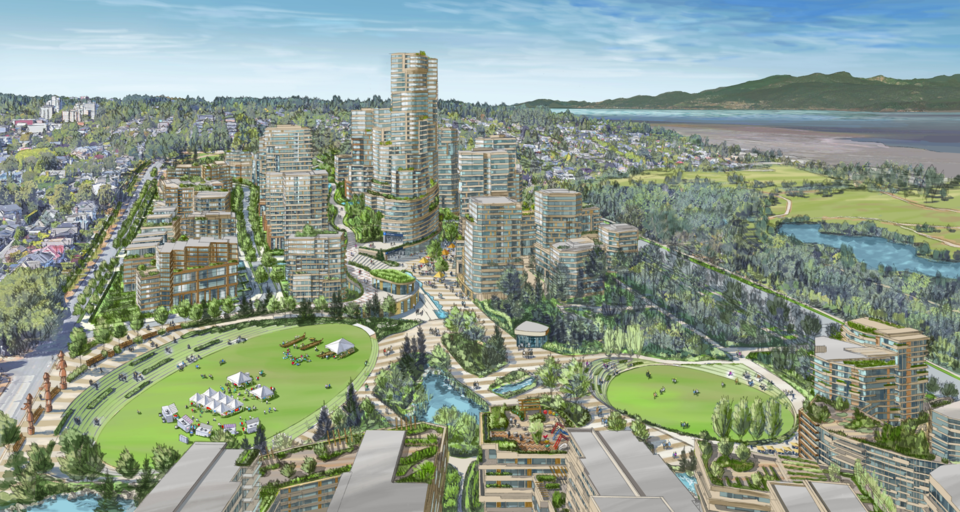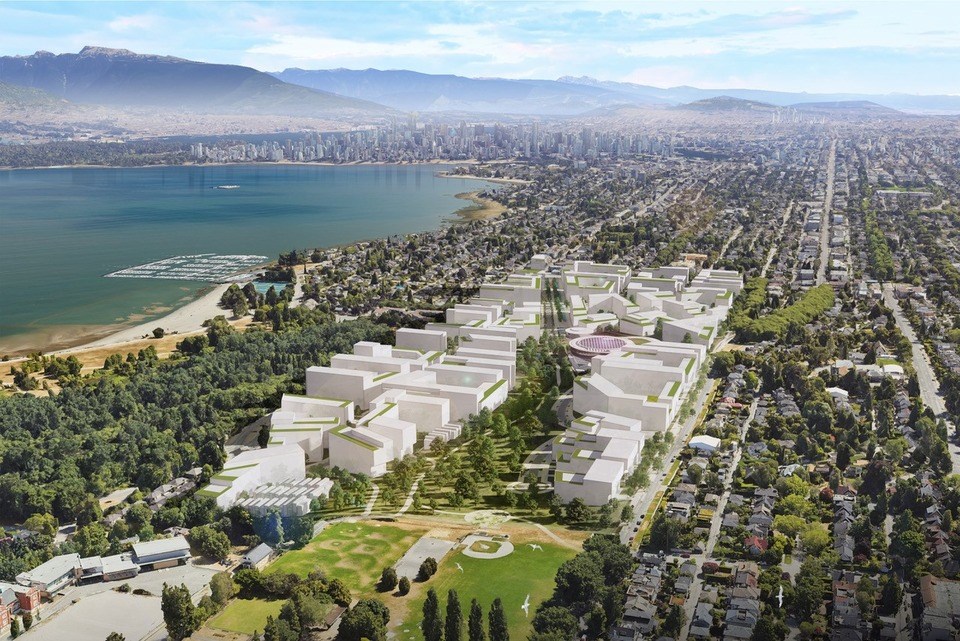A group of Vancouver residents have released their own revised site concept for the Indigenous-led Jericho Lands development.
The new plan from the Jericho Coalition addresses issues they have with the Musqueam, Squamish and Tsleil-Waututh First Nations (MST Nations) and Canada Lands Company (CLC) development.
The new plan addresses problems with height, density, affordability and sustainability, according to Bill Tieleman, a coalition spokesperson. In a press release that was made public on June 29, the development is described as “high-rise luxury concrete towers.”
“We support their right to develop the land, they own the land, and they have every right to develop it. But they also need to follow the process of privately owned land, which is what every developer in Vancouver has to do, go through a consultation process and listen to input from the community and make changes as required by both the public and certainly by the city,” said Tieleman.
The main change in the coalition’s new plan is a focus on low- and mid-rise buildings rather than the highrises that are included in MST’s updated plan.
The MST Nations and CLC unveiled their revised concept for the Jericho Lands 36.4-hectare (90-acre) master-planned community on June 16.
“The MST-CLC team … were pleased to engage with hundreds of community members from across the region during the recent City of Vancouver-led open houses in June 2023,” said the MST Nations and CLC in a statement to Glacier Media.
“We appreciated the dialogue around the revised site concept and will continue to consider input from MST Nations’ Community Members and members of the public as we move through the City of Vancouver-led planning process toward a Policy Statement in the fall.”
The revised site plan has more density and housing than the original plan which included 9,000 homes for 15,000 to 18,000 residents. Updates include plans for 13,000 new homes for different household types and buildings that range from eight storeys up to 45 storeys, with three “sentinel” buildings at 49 storeys that represent each of the First Nations, according to a press release.

The coalition’s proposal includes plans for four- to eight-storey buildings surrounded by open courtyards. These would use prefabricated modular wood components and mass timber rather than concrete and steel. As a result, the coalition's plan would create between 7,500 and 8,500 units, according to Tieleman.
This would create less emissions, improve energy efficiency and “even lead a new Indigenous-led forest industry sector,” said the coalition's press release.
In a statement to Glacier Media, the City of Vancouver said that there are “trade-offs” when it comes to highrise versus mid-rise developments.
“A site with only low-rise forms would not provide the same number of homes. It would also result in less park and public open space (which are important for livability) and important environmentally responsive hydro-logical and ecological site features since lower buildings would need to be spread out more across the site. A variety of building forms and heights also helps to create visual interest on a large site such as Jericho,” said the city in a statement.
The city also added that 45 to 60 per cent of the buildings will be constructed from wood. In addition, they cite new concrete mixes and the use of mass timber which can significantly reduce embodied carbon in the construction of new highrise buildings.
In addition to building height, Tieleman and the coalition believe that the project is not doing enough to address affordability.
“I just can't imagine that west side, highrise apartments are going to be affordable. They're certainly not going to be social housing,” he said.
“This is not aiming for missing middle housing; this is aiming for higher-end profitability.”
Approximately 2,600 homes will be affordable and social housing, with approximately 1,300 homes designated for moderate-income rental housing. Housing opportunities on the Indigenous-owned land would be limited to leasehold tenure, making home ownership more affordable than freehold, according to MST and CLC.
When asked if the coalition has been in contact with MST Nations and CLC regarding their proposed plan, Tieleman said they have not had any official contact but hope to have a conversation in the future.


